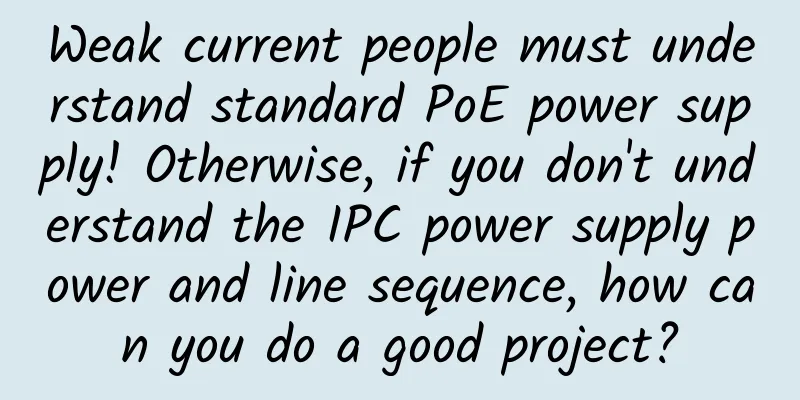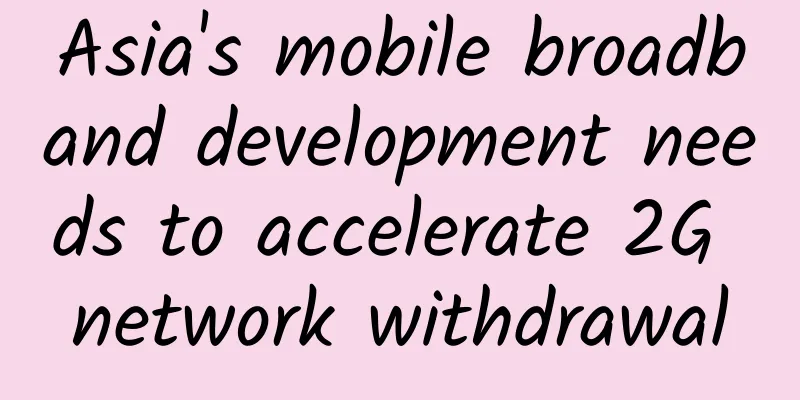Weak current people must understand standard PoE power supply! Otherwise, if you don't understand the IPC power supply power and line sequence, how can you do a good project?

What is Standard PoE?PoE, or Power over Ethernet, is a technology that transmits data and power simultaneously on Ethernet cables. After applying this technology, network terminal devices only need to connect to the network cable to meet power supply needs. Standard PoE is divided into three categories according to power supply standards: IEEE802.3af, IEEE802.3at and IEEE802.3bt. Why do we need PoE?
What are the standard PoE device types?As shown in the figure below, the PoE power supply system includes the following two device roles:
Standard PoE power supply modeAccording to the definition of IEEE standards, PSE devices are divided into two types: MidSpan (PoE function module is outside the device) and Endpoint (PoE function module is integrated into the device). Endpoint PSE devices are divided into two power supply modes: Alternative A (1/2 and 3/6 line pairs) and Alternative B (4/5 and 7/8 line pairs) according to the power supply line pairs used.
Standard PoE negotiation processAfter the PSE is powered on and the PD is connected to the PSE through the network, the PSE and PD begin power supply negotiation:
Standard PoE power supply parameter standardIn order of time, IEEE has released PoE standards such as 802.3af (PoE), 802.3at (PoE+) and 802.3bt (PoE++). The later released standards are compatible with the earlier released standards, but the earlier released standards are not compatible with the later released standards.
Standard PoE power classificationAccording to the required power, PoE devices are divided into different classes (Class 0 to Class 8, a total of 9 classes):
|
<<: Intel Launches High-Performance, Energy-Efficient Ethernet Solutions
Recommend
TmhHost back-to-school season discount: Los Angeles, Japan, South Korea CN2 line VPS quarterly payment starting from 100 yuan
TmhHost's back-to-school season event is stil...
GreenCloudVPS: 50% off AMD Ryzen series VPS, available in Hong Kong/Japan/Singapore/USA
I recently received an email from GreenCloudVPS, ...
5G economy has arrived, and there is no "hidden corner" for industrial innovation
The summer of 2020 was a special experience for t...
Review of China Unicom in 2020: Being “down-to-earth” in the “hyper-realistic” development of 5G, and moving forward with firm “mixed reform”
As a technology that can rewrite the rules of the...
Interviewer: Can you tell me about the release process of WeChat Mini Programs?
[[431428]] This article is reprinted from the WeC...
Even Excel is inferior! Do you know these functions of WPS?
[[392221]] WPS is one of the few office software ...
The unlimited package has been cancelled? What does this mean for 5G?
It is reported that China Telecom announced that ...
SDN/NFV/CLOUD is too complex and AI and 5G accelerate the reconstruction of the network
Just like decoration in life, during the decorati...
What to expect from SD-WAN in 2019? Five major trends to watch
There’s probably no hotter topic in networking ci...
How 5G will help wearable devices like smartwatches charge automatically
[[435239]] In Japan, a trial project to wirelessl...
What should we pay attention to during the wiring construction of weak current systems?
Wiring construction of horizontal subsystem The h...
When the 2G/3G network is down, will your IoT work properly?
Over the past few years, we’ve seen a lot of head...
Challenges of managing applications
One of the most important lessons that businesses...
4G is a knife, and 5G is a Swiss Army knife?
[[189173]] If the 4G network is a knife that can ...
In 2025, what directions in the communications industry are worth paying attention to?
Time flies, and in the blink of an eye, 2024 is o...









